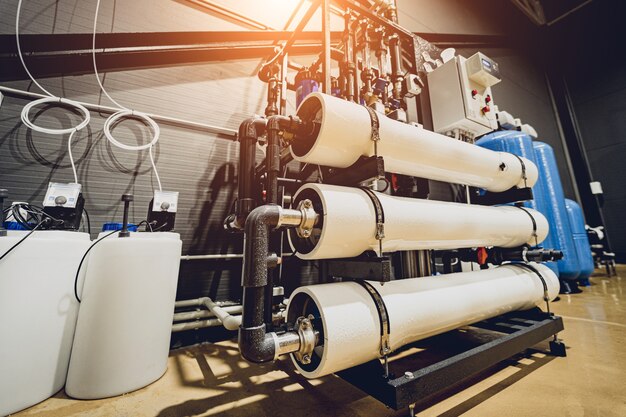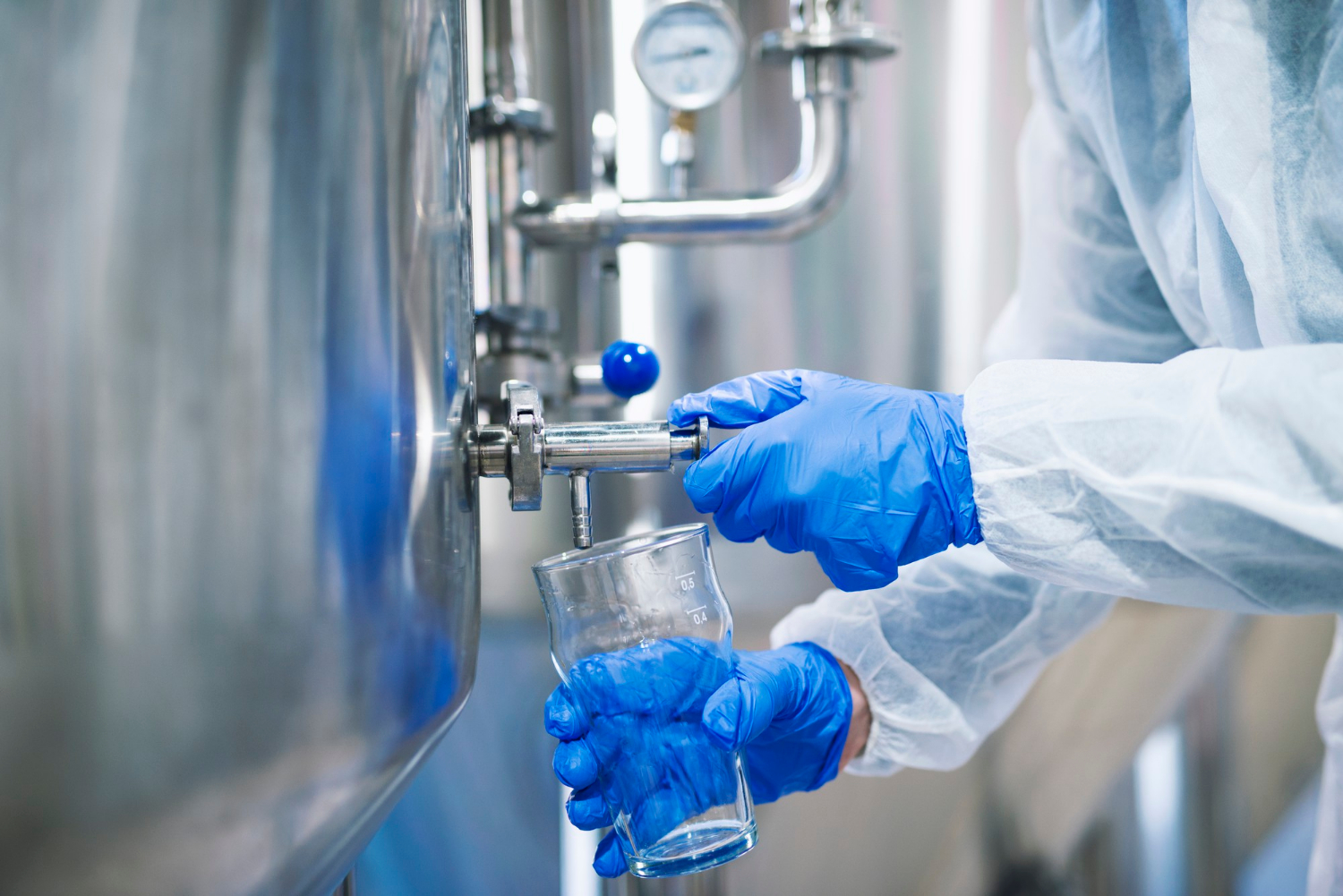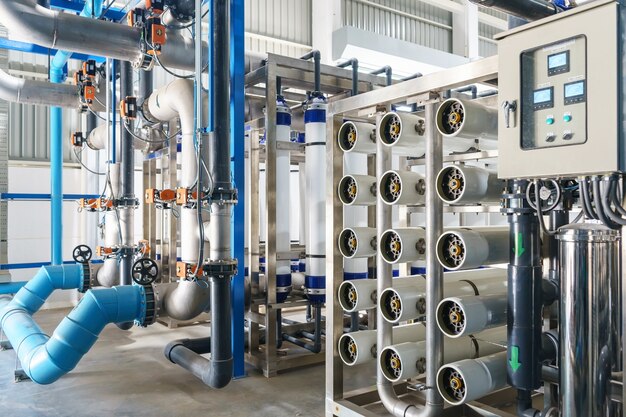Reverse Osmosis (RO) membranes play a crucial role in water treatment systems, removing impurities, heavy metal ions, microorganisms, and other pollutants. However, over time, RO membranes can become clogged due to dirt, algae, bacteria, or mineral deposits, leading to reduced filtration efficiency. Regular cleaning and chemical maintenance are essential to ensure optimal performance and longevity of the RO membrane.

1. When Should RO Membranes Be Cleaned?
RO membranes need cleaning when you notice any of the following signs:
✅ Sudden decrease in filtered water flow compared to normal levels.
✅ Increased membrane pressure due to accumulated contaminants.
✅ Deterioration in water quality (increased TDS, hardness, or SDI index).
✅ Higher wastewater discharge and reduced water recovery efficiency.
.jpg)
2. Common Causes of RO Membrane Contamination
Impurities accumulating on RO membranes generally fall into four main categories:
🔹 Inorganic Scale & Mineral Deposits (Scaling)
- Includes CaCO₃, CaSO₄, Mg(OH)₂, Fe(OH)₃…
- Occurs when the water source has high hardness or contains iron and manganese ions.
🔹 Organic Contaminants & Microorganisms
- Includes algae, bacteria, fungi, and mold.
- Develops when the system is not cleaned regularly or when the feed water is not properly treated.
🔹 Colloidal & Sediment Deposits
- Includes silica, clay, dirt, grease, and oil.
- Appears when the incoming water contains high levels of suspended particles.
🔹 Metal & Oxidation Deposits
- Includes iron (Fe), manganese (Mn), aluminum (Al), etc.
- Forms due to oxidation reactions in the system or the presence of heavy metals in the water.
3. Types of Chemicals Used for RO Membrane Cleaning
Specialized cleaning chemicals are required based on the type of contamination:
| Type of Contaminant |
Common Cleaning Chemicals |
Notes |
| Inorganic Scale & Mineral Deposits (CaCO₃, CaSO₄, Mg(OH)₂, Fe(OH)₃) |
Acidic solution (pH 2-3) such as Citric Acid, Diluted HCl, NaHSO₃ |
Dissolves lime scale, iron, and manganese deposits |
| Organic Contaminants & Microorganisms |
Alkaline solution (pH 10-12) such as NaOH, EDTA, Chlorine |
Breaks down biofilms, algae, and organic deposits |
| Colloidal & Sediment Deposits |
Neutral cleaning solution such as Surfactant, Sodium Metabisulfite |
Disrupts colloidal structure, removes sediment buildup |
| Grease, Oil & Heavy Metal Deposits |
Strong alkaline solution + surfactant |
Cleans grease, removes oxidized metal deposits |
.jpg)
4. RO Membrane Cleaning Process Using Chemicals
Step 1: Preparation of Chemicals & Equipment
🔹 Check system pressure, flow rate, and water quality before cleaning.
🔹 Prepare cleaning pumps, chemical tanks, and circulation pipelines.
🔹 Select the appropriate cleaning chemical based on the type of contamination.
Step 2: System Shutdown & Draining
🔹 Turn off the RO system and drain the remaining water to prevent chemical dilution.
🔹 Remove the RO membrane (if necessary) for direct inspection of contamination.
Step 3: Chemical Cleaning Process
🔹 Mix cleaning chemicals as per manufacturer guidelines.
🔹 Circulate the cleaning solution through the system at a moderate flow rate (~10-30 minutes).
🔹 Soak the RO membrane in the cleaning solution for 30 minutes to 2 hours, depending on the severity of contamination.
🔹 Drain the cleaning solution and rinse thoroughly with clean water.
💡 Important Notes:
✔ Use acidic cleaning first for mineral scaling, followed by alkaline cleaning if necessary.
✔ Avoid excessive chlorine use, as it can damage RO membranes.
✔ Ensure proper pH balance after cleaning to prevent residual chemicals from affecting water quality.

5. Key Considerations When Cleaning RO Membranes
✅ Select the appropriate chemical for each type of contaminant to achieve maximum effectiveness.
✅ Follow the manufacturer’s instructions to prevent damage to the RO membrane.
✅ Avoid overuse of cleaning chemicals, as this may reduce membrane lifespan.
✅ After cleaning, test system performance by measuring pressure, flow rate, and water quality.
✅ Perform regular membrane cleaning to maintain efficiency and prevent severe clogging.

6. How Often Should RO Membranes Be Cleaned?
The frequency of cleaning depends on the quality of the feed water and operating conditions:
🔹 Every 3 - 6 months if the system runs continuously with high levels of contaminants.
🔹 Every 6 - 12 months for systems with effective pre-treatment and stable water quality.
🔹 Immediately upon signs of clogging, such as increased pressure or reduced water flow.
7. Conclusion
Regular cleaning and maintenance of RO membranes using the correct chemicals are essential to prolong membrane lifespan, maintain filtration efficiency, and ensure high water quality. Proper chemical selection and adherence to cleaning procedures will help keep the system operating smoothly while minimizing operational and maintenance costs.
Contact Us for Consultation & Product Supply
📌 REECHEM CO., LTD
📍 Address: 5th Floor, Lighthouse Building, 1254 Xô Viết Nghệ Tĩnh, Hòa Cường Nam Ward, Hải Châu District, Da Nang City, Vietnam.
📞 Phone: 0236 391 88 68 / Hotline (Zalo): 0789 086 626
📧 Email: info@reechem.com.vn
🌐 Website: reechem.com.vn


